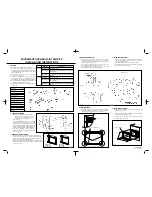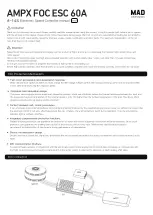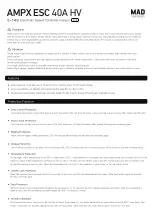
8
LRR 1-52, LRR 1-53, URB 55 - Installation & Operating Manual -
850645-01
Specialist terms/Abbreviations
Here, we explain some abbreviations, specialist terms, etc., which are used in this Manual.
Blowdown controller
A blowdown controller is a conductivity controller with special features for actuating continuous blow-
down valves on steam boilers. It can also be used as a conductivity controller in other types of system.
Continuous blowdown
Continuous and/or periodic removal of a certain (defined) quantity of boiler water via a continuous blow-
down valve, e.g. BAE46 or BAE47.
To determine the total dissolved solids in the boiler water, its electrical conductivity is measured in μS/cm,
although some countries also use ppm (parts per million) as the unit of measurement.
Conversion: 1 μS/cm = 0.5 ppm.
Intermittent boiler blowdown
Intermittent blowdown is achieved by the abrupt opening of the intermittent blowdown valve for a period
of around 3 seconds.
Time-based pulse/interval actuation of the intermittent blowdown valve optimises the removal of sludge
from the boiler. The interval between the intermittent blowdown pulses can be set between 1 and 200 h
(intermittent blowdown interval). The duration of intermittent blowdown can be set between 1 and 10 s. For
large boilers, repeated intermittent blowdown pulses may be required. Repetition can be set between 1 and
10 with an interval from 1 – 10 seconds (pulse interval).
External intermittent blowdown
If more than one steam boiler is connected to a single blowdown receiver, simultaneous blowdown is
not permitted. In this case,an external interlock control can monitor and control the individual blowdown
operations.
Temperature compensation
The electrical conductivity of water changes as the temperature falls or rises. To obtain meaningful read-
ings, it is therefore necessary to base the measurements on the reference temperature of 25 °C, and to
correct the measured conductivity using the temperature coefficient tC.
Cell constant
The cell constant is a geometric variable of the conductivity electrode and is taken into account when
calculating the conductivity. However, this constant may change during operation, e.g. due to dirt deposits
on the measuring electrode.
If a reference measurement yields a result that differs from the indicated conductivity value, first check
the temperature compensation.
Modify the cell constant only if the temperature coefficient setting is no longer adequate for correct com-
pensation. In this case, change the cell constant until the reading and the indicated conductivity match.









































